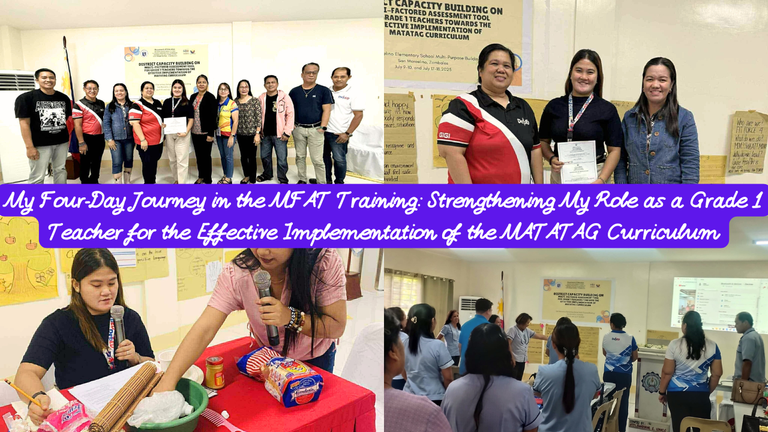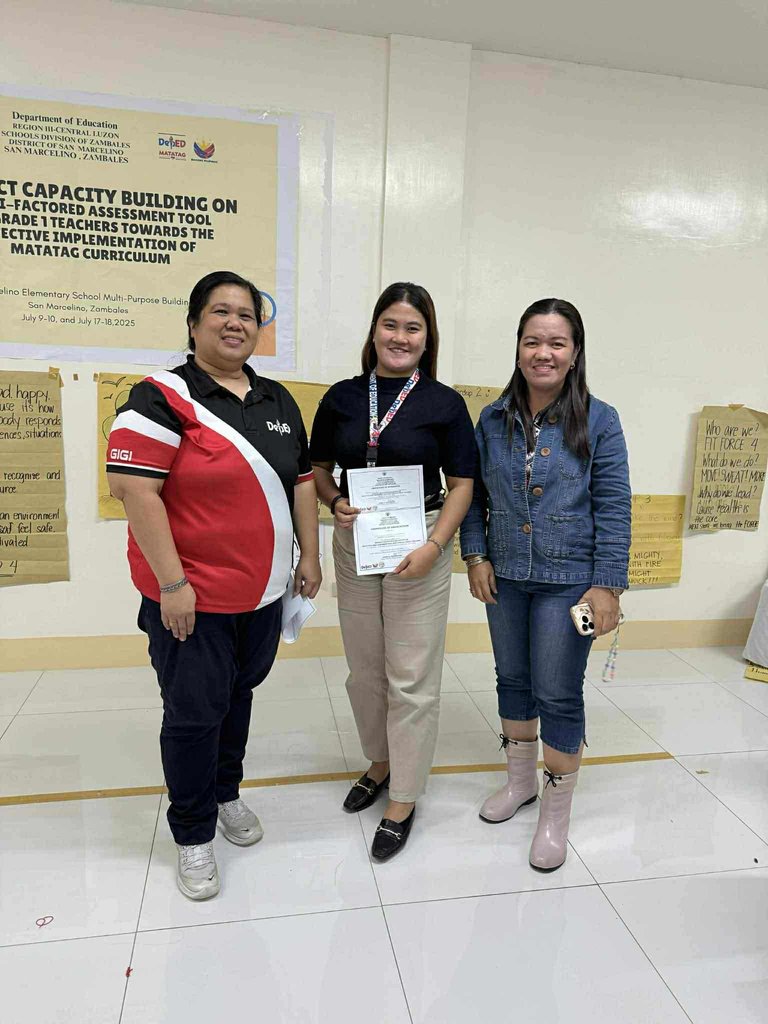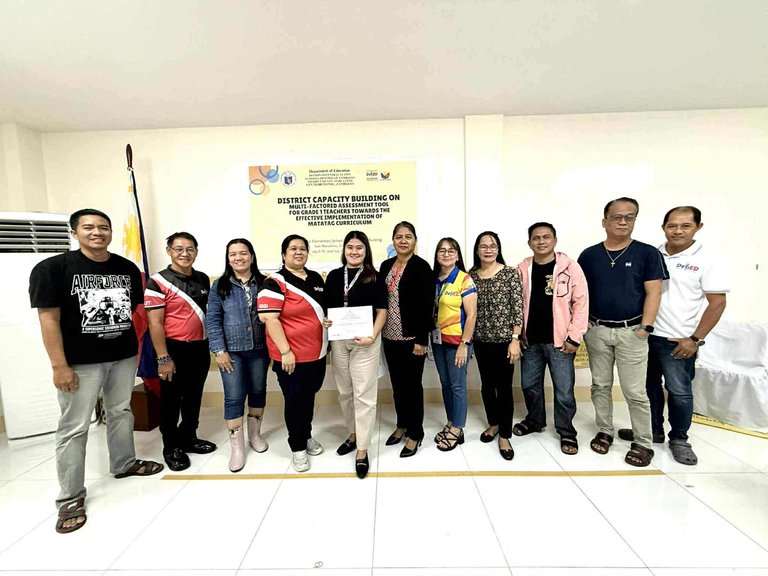My Four-Day Journey in the MFAT Training: Strengthening My Role as a Grade 1 Teacher for the Effective Implementation of the MATATAG Curriculum
As a Grade 1 teacher deeply committed to the foundation of my learners' education, I was both excited and honored to participate in the Multi-Factored Assessment Tool (MFAT) Training – a four-day professional development program designed to deepen our understanding and enhance our competencies in the effective implementation of the new MATATAG Curriculum.

This training wasn't just another seminar. It's a great privelege for me since it was a transformative experience that provided me with meaningful insights and practical strategies as I take on one of the most crucial tasks in education: assessing and supporting the diverse learning needs of my young learners.
Day 1: Embracing the Purpose and Vision
The first day opened with an in-depth orientation on the purpose of the MFAT and its alignment with the MATATAG Curriculumleaded by our MFAT coordinator, Mrs. Lovelyn Abay. The facilitators emphasized that the MFAT is not merely a test, but a comprehensive tool designed to identify learning strengths and gaps in literacy and numeracy among Grade 1 students; enables us, grade 1 teachers, to provide targeted interventions, ensuring that no child is left behind.

The resource speakers enlightened the principles of developmentally appropriate practices and how MFAT complements these principles. It was enlightening to understand that MFAT supports evidence-based decision-making, making our assessments more responsive and meaningful catering the needs ofour students.
Day 2: Exploring the Tool in Depth
On the second day, we delved into the components of the MFAT. Each item, each domain, and each skill was discussed thoroughly. We examined how the tool addresses the essential learning competencies in the MATATAG Curriculum, particularly in Foundational Literacy and Numeracy (FLN), that makesusknowledgeable inimplementing the said program.

Through simulation activities and collaborative discussionswith my co- grade 1 teachers, we practiced administering the tool. It became clear that MFAT is not just about evaluating learners, but about understanding them more deeply—their pace, their struggles, and their silent progress.

I appreciated the clarity of the indicators and how the tool allowed space for teacher observations and anecdotal records, that make us easily understand in administering MFAT to our learners. This provided us with a holistic view of our learners, beyond just numbers and scores.
Day 3: From Assessment to Instructional Planning
Day three focused on how to interpret MFAT results and translate them into effective instructional plans. We worked in groups to analyze sample data and craft appropriate interventions based on learners' profiles, and this groupcollaboration makes the bond of us stronger.

We were guided on how to develop remedial and enrichment activities based on assessment outcomes. The collaborative work and sharing of best practices among fellow Grade 1 teachers made the day enriching and interactive.
Day 4: Demonstration, Reflection, and Commitment
The last day was a culmination of all the knowledge and skills we had gained. I was deeply humbled and proud to have been given the privilege to serve as a demo teacher in front of the participants and facilitators. With confidence and a deep sense of responsibility, I demonstrated how to properly administer a section of the MFAT with a mock learner.


It was an overwhelming moment, not because of nervousness, but because I knew I was representing not just myself but the many teachers like me who dedicate their hearts to our learners every single day. The applause and feedback I received were not just affirmations, but motivations to strive further.


Is always good to improve from where we were to where we are not, I believe the training has opened your eyes to things you didn't know before thereby widening your horizon
Indeed, I am forever grateful for every chances like this, because I had the chance to improve myself to be a better teacher for my learners. ♥️
Gradually you are there, keep moving
A lot of learnings you gained whereas for the betterment of your learners.
Ofcourse, and this could be the opportunity for me to help myself to be a better teacher for my learners, and as an agent of change of the future. ♥️ Thank you for dropping by. ♥️